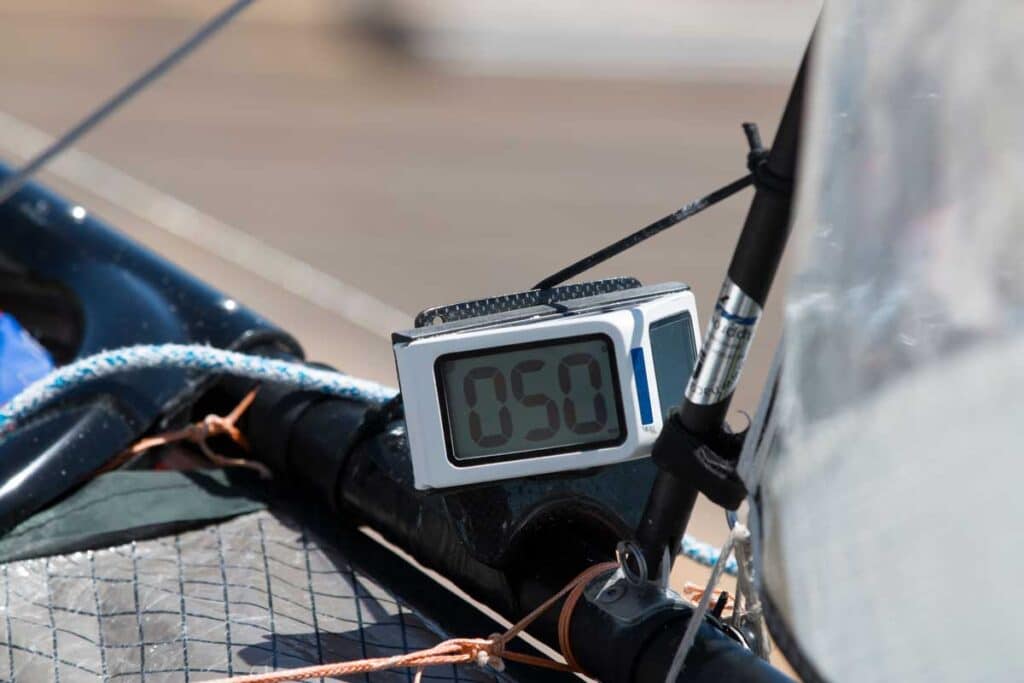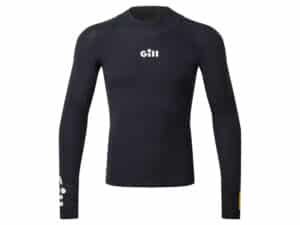
We first looked at Velocitek’s Prism compass in 2019 and found a lot to like: big, easy-to-read numbers, cut-acrylic lenses that allow the numbers to be easily seen in any daylight situation and not get wonky when viewed through polarized lenses, and at just under five ounces, probably the lightest small-boat compass out there. So, when we learned a new version was in the wings, we had to see what could possibly have been improved.
In appearance, the New Prism is identical to the original except for one detail—a USB port on the back, sealed with a half-inch diameter plug that can be screwed in or out with a coin. Out of juice after a long day on the water? Plug it into your computer or a wall brick, and in about six hours you can go from zero to full charge. Most times, you don’t even need to be at 100 pecent since a full charge will last more than 48 hours, so you probably won’t even need six hours of charging. No more setting the compass out in the sun for hours after racing, hoping the clouds don’t roll in before it’s recharged.
“The USB is more of a sure thing,” says Velocitek’s Charles Swanson. “Cloudy days don’t affect it, and it doesn’t matter if the compass is tucked up in the shade under the boom.” With this setup, the solar panel is now just a battery-extending backup.
The other big difference is inside. The New Prism now houses the same, patented, solid-state geomagnetic sensor found in Velocitek’s top-of-the-line ProStart instrument. Two big advantages of this upgrade, says Swanson. “This magneto-inductive sensor is not influenced by temperature changes and is inherently free from offset drift. This means that the factory calibration remains valid indefinitely and in all conditions. ”
More importantly, the new sensor, combined with the more powerful charging supplied by the USB connection, allows a dramatically improved refresh rate—the number of times the screen is updated—going from the earlier Prism’s once a second to four times a second. Want to see it in action? Go through a tack and watch the numbers change. Undetectable lag time.
Ease of use? One button positioned on top of the compass does everything. That should put a big smile on the faces of those who have struggled with multi-button processes on various other electronic devices. Press the button and the left screen says “BAT” and displays the battery level on the right screen. Shortly after, it automatically switches to compass mode. And that’s all there is to it, unless you want to set the damping mode, done by briefly pressing the button again. Toggle through one of three damping levels by tilting the compass. This was the trickiest part of the compass to use, as you have to press the button again at the exact moment the desired damping level appears. Miss that moment and you’re probably onto another damping level. Not a big deal though, as this is something few would often adjust. Turn off the power by holding the button down for about three seconds. Easy-peasy.
For some, the one hesitation about the New Prism is the lack of a timer. The folks at Velocitek don’t apologize for that. After all, their goal was to create a straightforward, easy-to-operate, top-level compass—nothing more. Perfection embodied. And that’s just fine with a lot of sailors. For instance, in some classes, it’s impractical to have a timer and compass in one unit, such as Nacra catamarans, which mount the compass on the bowsprit, or 49ers, which carry the compass forward of the mast. That’s a pretty inconvenient reach to change modes. Others gravitate to a single-use instrument because of a reluctance to be without compass readings in the starting sequence. Yes, you can toggle between modes, but how many of us have found ourselves locked out of one mode or the other at that critical time, often because we accidentally pressed the wrong button or we held it down too long?
This compass doesn’t meet the needs of everyone, but if you’re looking for a fail-safe instrument that will give you quick and precise readings as well as eliminate concerns about staying charged, it’s definitely worth considering. $579.









